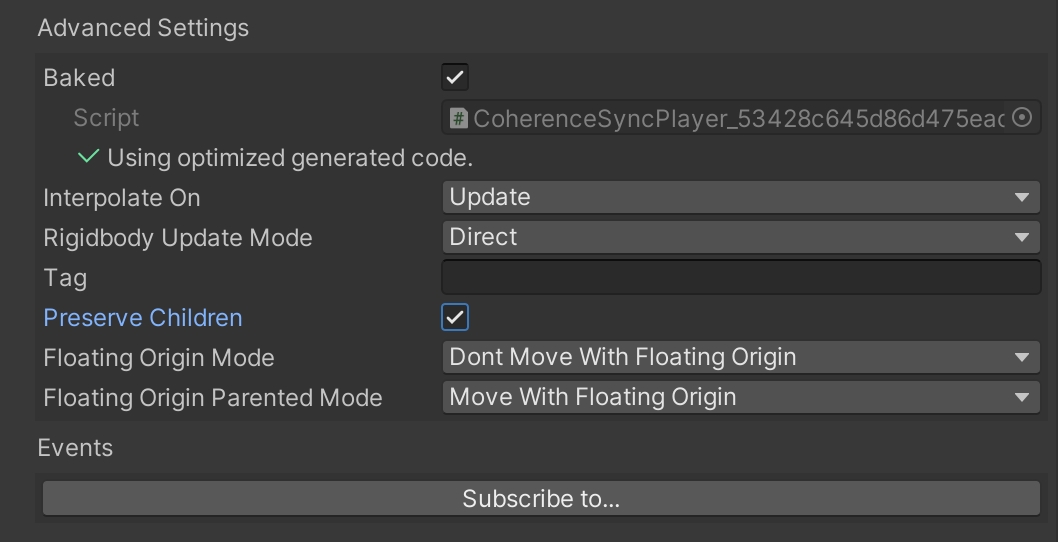Direct children CoherenceSyncs
CoherenceSync direct parent-child relationships at runtime
CoherenceSync direct parent-child relationships at runtime
Objects with the CoherenceSync component can be connected at runtime to other objects with a CoherenceSync component to form a direct parent-child relationship.
For example, an item of cargo can be parented to a vehicle, so that they move together when the vehicle is in motion.
Keep in mind that on this page we deal with direct parenting of two CoherenceSync GameObjects. If it's not practical to parent a network entity directly to the root of another, see instead how to deeply nest CoherenceSyncs.
When an object has a parent in the network hierarchy, its transform (position and orientation) will update in local space, which means its transform is relative to the parent's transform.
A child object will only be visible in a LiveQuery if its parent is within the query's boundaries.
Parenting network entities directly doesn't require any extra work. Any parenting code (i.e. Unity's own transform.SetParent() will work out of the box, without any need for additional action.
You can add and remove parent-child relationships at runtime – even from the Unity editor, by drag-and-drop.
If the child object is using LODs, it will base its distance calculations on the world position of its parent. For more info, see the Level of detail documentation.
When the parent CoherenceSync is destroyed, by default its CoherenceSync children get destroyed together with it. This can be changed via the Preserve Children option on the parent, under Advanced Settings:
When Preserve Children is enabled, if the authority destroys or disables the parent entity, child entities get unparented instead of being destroyed together with the parent. Those children will now reside at the root of the Scene hierarchy.
For an example of direct child CoherenceSync components parenting and unparenting at runtime, check out the First Steps sample project, specifically lesson 4.

